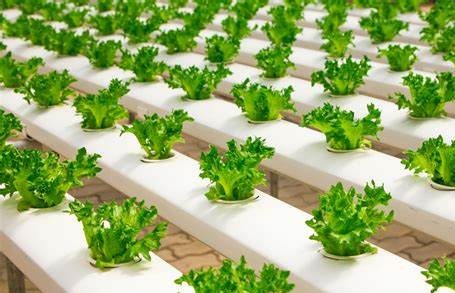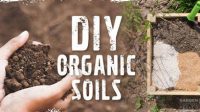goads.id – Imagine your garden – not a battlefield of wilting leaves and struggling vegetables, but an Edenic paradise humming with life. Lush, vibrant plants bursting with flavor compete for space with fragrant flowers, while butterflies flit between rows of buzzing bees. Birds feast on plump berries, and the air vibrates with the joyous chorus of a thriving ecosystem. This isn’t some utopian fantasy; it’s the natural harmony that unfolds when we nurture the heart of our gardens – the soil – without resorting to the chemical crutches of conventional agriculture.
But ditching the harsh chemicals and embracing chemical-free cultivation isn’t just about dreamy visions of bountiful harvests; it’s about a fundamental shift in our relationship with the planet. It’s about understanding that soil is not just dirt, but a living tapestry woven with billions of unseen creatures, a symphony of minerals and micro-organisms that holds the key to unlocking the earth’s bounty. So, are you ready to swap the chemical baton for the conductor’s wand and orchestrate a symphony of life in your own backyard?
Why Ditch the Chemicals? Beyond Band-Aids for Your Soil
Chemical fertilizers might seem like an easy fix, a quick boost that jolts your plants into action. But think of them like sugary snacks – a temporary rush followed by a crash. They might give your plants a fleeting nitrogen high, but they neglect the underlying health of your soil. Imagine pouring artificial sweeteners on a wilting flower; it might perk up for a moment, but its root system, its true source of strength, remains neglected.
Healthy soil is like a thriving orchestra, teeming with microbes, fungi, and other microscopic maestros. They decompose organic matter, releasing vital nutrients and creating a complex dance of minerals that nurtures your plants from the roots up. Chemical fertilizers disrupt this delicate balance, silencing the natural conductors and replacing them with artificial notes. The result? Weak, dependent plants prone to disease and pests, while the soil itself becomes increasingly lifeless, a desolate wasteland devoid of its natural orchestra.
Embracing the Organic Symphony: Techniques for Cultivating Thriving Soil
So, how do we turn up the volume on this natural symphony? It’s time to ditch the chemical quick fixes and embrace the wisdom of nature! Here are some tried-and-true organic methods to enrich your soil and unleash its hidden potential:
The Compost King: Nature’s Recycler and Nutrient Powerhouse
Compost, the glorious black gold of the gardening world, is the undisputed king of organic soil enrichment. Think of it as nature’s recycling bin, where kitchen scraps, fallen leaves, and yard trimmings transform into a potent elixir for your beloved plants. But creating this magic potion requires mastering the art of the “brown and green.” Your compost pile needs a delicate balance: carbon-rich “browns” like shredded paper, twigs, and dead leaves provide structure and aeration, while nitrogen-rich “greens” like kitchen scraps, grass clippings, and coffee grounds fuel the decomposition process.
As this motley crew of organic matter breaks down, a symphony of microbial activity fills the air. Fungi weave their mycelial threads, connecting plants to a vast nutrient network, while bacteria tirelessly decompose, releasing a treasure trove of minerals and nutrients. The result? A rich, earthy concoction teeming with life, ready to revitalize your soil and send your plants into overdrive.
Cover Crop Cavalry: Nature’s Green Manure and Erosion Fighter
Next, let’s call upon the cover crop cavalry, nature’s unsung heroes. These temporary residents blanket your soil after harvest, smothering weeds, preventing erosion, and adding a vital dose of nitrogen to the equation. Legumes like beans and peas are nitrogen champions, fixing atmospheric nitrogen into the soil, leaving behind a bounty for future crops. Other cover crops like buckwheat and rye suppress weeds, improve soil structure, and attract beneficial insects, creating a vibrant oasis for your garden’s microbiome.
Mulch Mayhem: Suppressing Weeds and Retaining Moisture
Now, let’s layer on the final act of this natural play – the mulch mayhem! Wood chips, straw, or even shredded leaves form a protective blanket on your soil’s surface, suppressing weeds, retaining precious moisture, and regulating soil temperature. Think of it as a cozy sweater for your earth, keeping it warm in winter and cool in summer. Mulch also slows down erosion, allowing precious topsoil to stay put and nourish your plants, not nourish a muddy ditch.
Beyond the Basics: Advanced Organic Soil Enrichment Techniques
For the adventurous gardeners who crave to delve deeper, let’s explore the cutting edge of organic soil enrichment:
Biochar Blitz: Locking Away Carbon and Boosting Soil Fertility
Imagine a magical charcoal that not only captures atmospheric carbon but also enhances soil fertility – that’s
Table: Common Organic Soil Amendments and Their Benefits
| Amendment | Key Benefits | Best For |
|---|---|---|
| Compost | Rich source of nutrients, improves soil structure, retains moisture | All plants |
| Cover Crops | Adds nitrogen, suppresses weeds, prevents erosion | Fallow periods, before planting next season’s crops |
| Mulch | Suppresses weeds, retains moisture, regulates soil temperature | All plants |
| Aged Manure | Potent source of nitrogen, phosphorus, and potassium | Nutrient-depleted soils, vegetables, fruit trees |
| Compost Tea | Boosts microbial activity, promotes plant growth, suppresses disease | All plants |
| Mycorrhizal Inoculant | Enhances nutrient uptake, improves drought tolerance | Vegetable gardens, fruit trees, perennials |
| Biochar | Retains nutrients, improves soil structure, sequesters carbon | All plants, especially in sandy or clay soils |
| Worm Castings | Rich in nutrients and beneficial microbes, improves soil aeration | All plants |
| Seaweed Extract | Provides trace minerals, stimulates plant growth, improves stress tolerance | All plants, especially coastal gardens |
Terra Preta Power: Ancient Amazonian Secrets for Rich, Dark Soil
Ever heard of Terra Preta? This rich, dark soil found in the Amazon Basin holds the secrets of ancient civilizations. Created by generations of indigenous people who enriched their soil with charcoal, bone fragments, and kitchen scraps, Terra Preta retains nutrients and moisture with exceptional efficiency. While replicating the exact recipe might be impractical, understanding the principles behind Terra Preta can inspire us to experiment with biochar and other organic amendments to create our own fertile havens.







